AWS Certified AI Practitioner
Fundamentals of AI and ML
Data Types in AI Models
Welcome to this comprehensive lesson on Data Types in AI Models. I'm Michael Forrester, and today we'll explore how different data types influence model performance and preprocessing strategies. This material is fundamental for AI practitioners and is particularly useful for exam preparation. Be sure to take detailed notes as you progress.
A data type represents the different forms in which data can be expressed and processed by AI models. These include numerical, categorical, text, image, audio, and time series data. Understanding how to handle each type is essential for applying the right preprocessing techniques and ensuring accurate predictions.
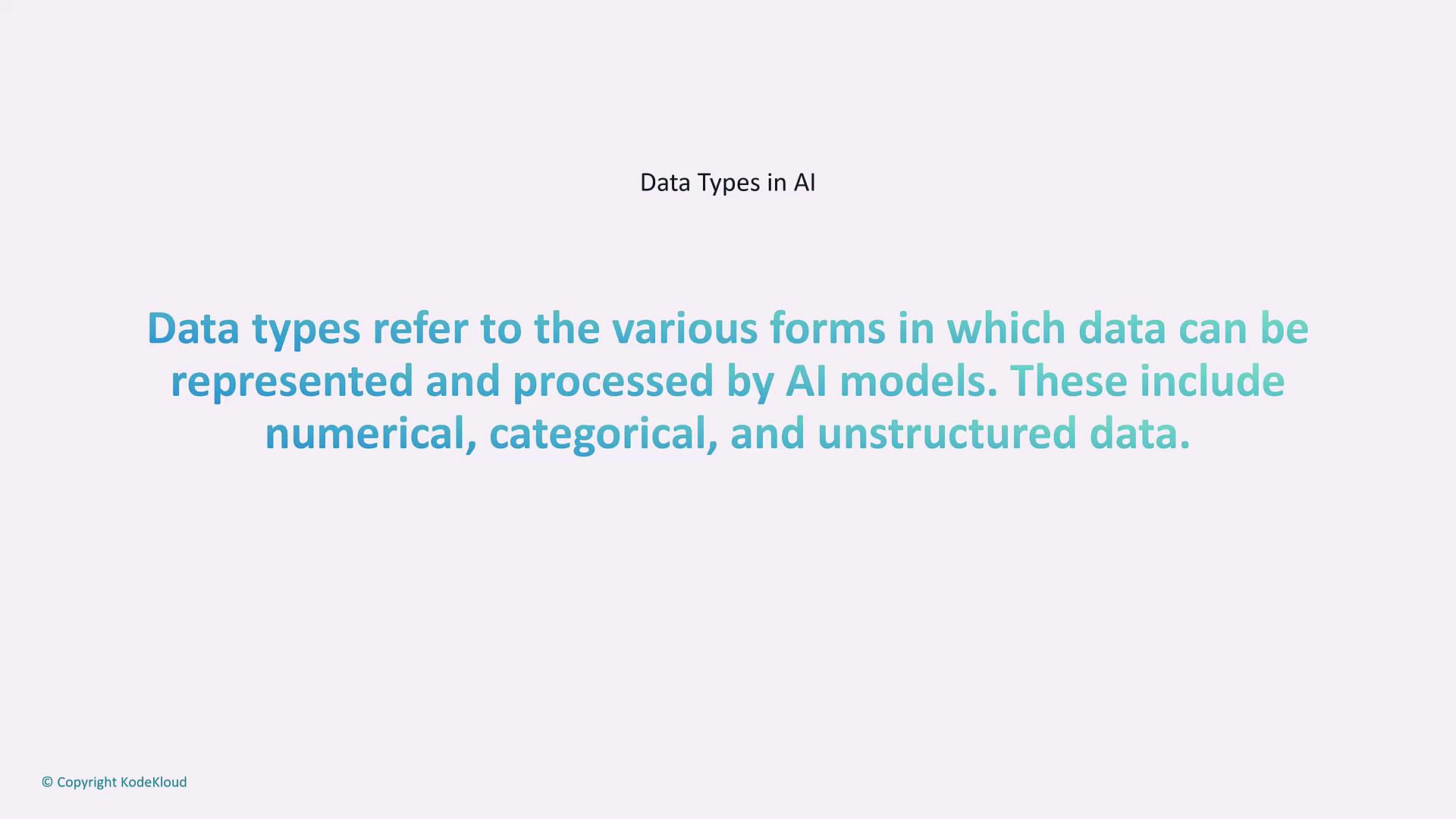
In AI, data is the backbone for operations like machine learning, deep learning, and neural networks. Each data type requires specialized preprocessing before model training.
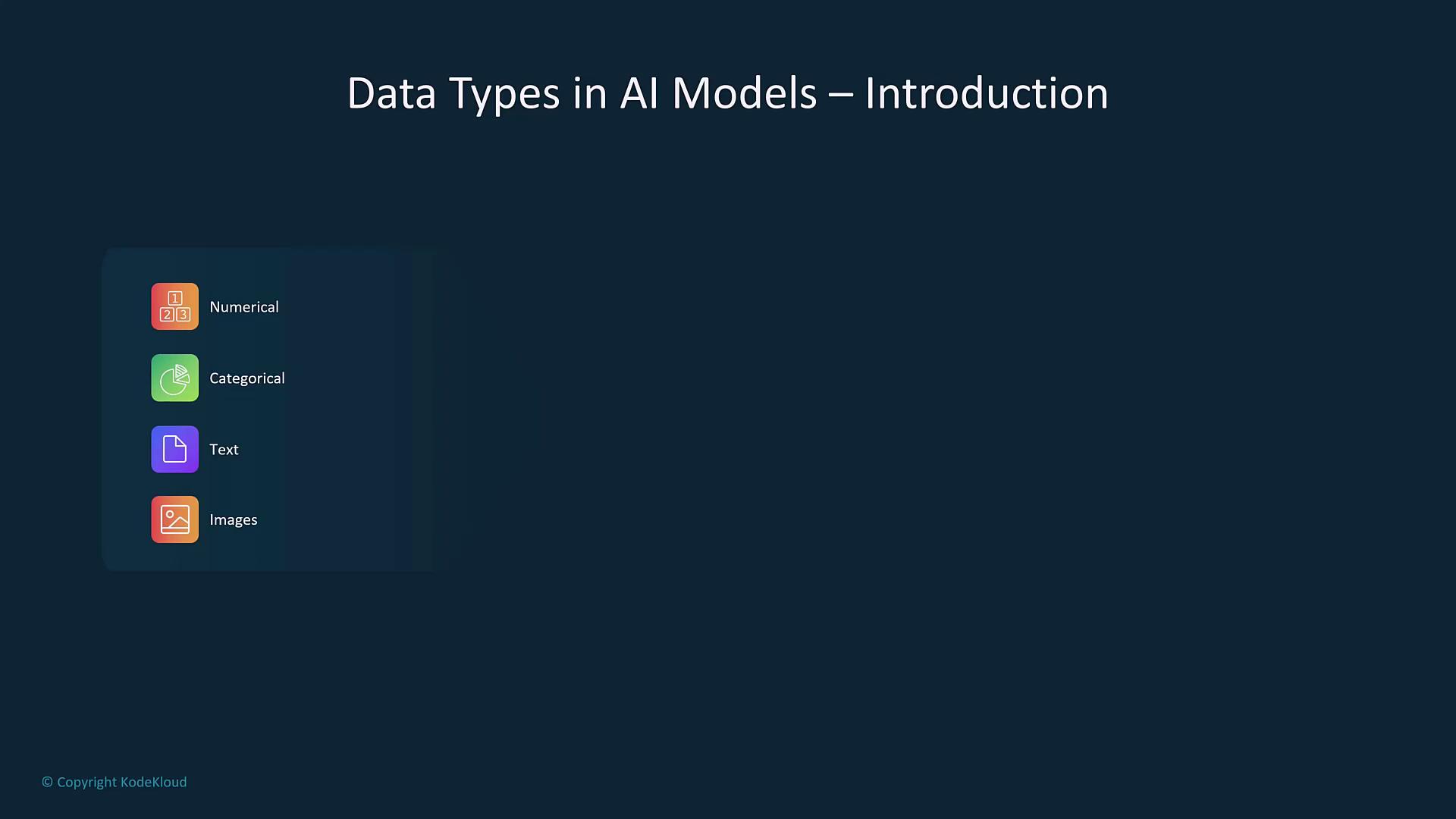
1. Numerical Data
Numerical data includes quantitative values—such as integers and floating-point numbers—that can be measured, sorted, and compared. These values indicate magnitude, direction, and trends and are essential for tasks like regression analysis, sensor monitoring, and forecasting.
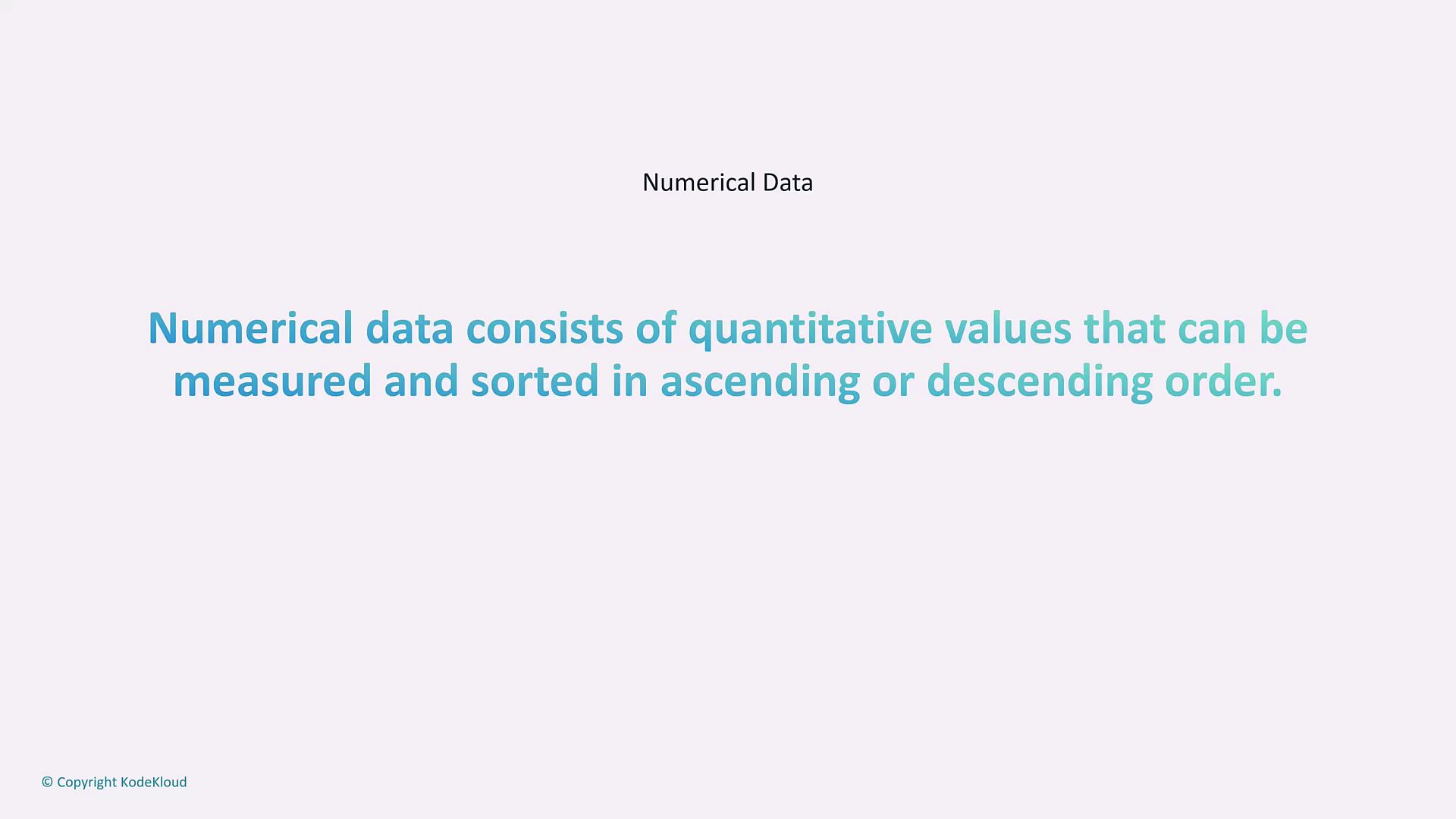
Datasets containing numerical data can be seamlessly integrated with AWS services like SageMaker, which can pull data from sources such as S3 or Redshift. These datasets are fundamental for applications such as stock price prediction, temperature forecasting, and sensor data analysis.
![]()
For example, numerical data enables models to forecast future values based on patterns found in historical trends:

2. Categorical Data
Categorical data classifies information into distinct groups or categories—ideal for classifying attributes such as gender, product types, or geographic regions. To use categorical data in AI models, it's often converted into numerical representations via techniques like one-hot encoding or label encoding.

For instance, one-hot encoding transforms category data into a binary format, streamlining how a model interprets group membership.
![]()

AWS SageMaker offers preprocessing tools that efficiently convert categorical data for supervised learning pipelines.
3. Text Data and Natural Language Processing (NLP)
Text data is often unstructured and includes raw inputs from conversations, books, emails, or social media posts. Although sentences may have inherent structure, natural language tends to be unpredictable and noisy. Preprocessing techniques such as tokenization, stop-word removal, and stemming help extract the most relevant features for tasks like sentiment analysis, text classification, and language translation.
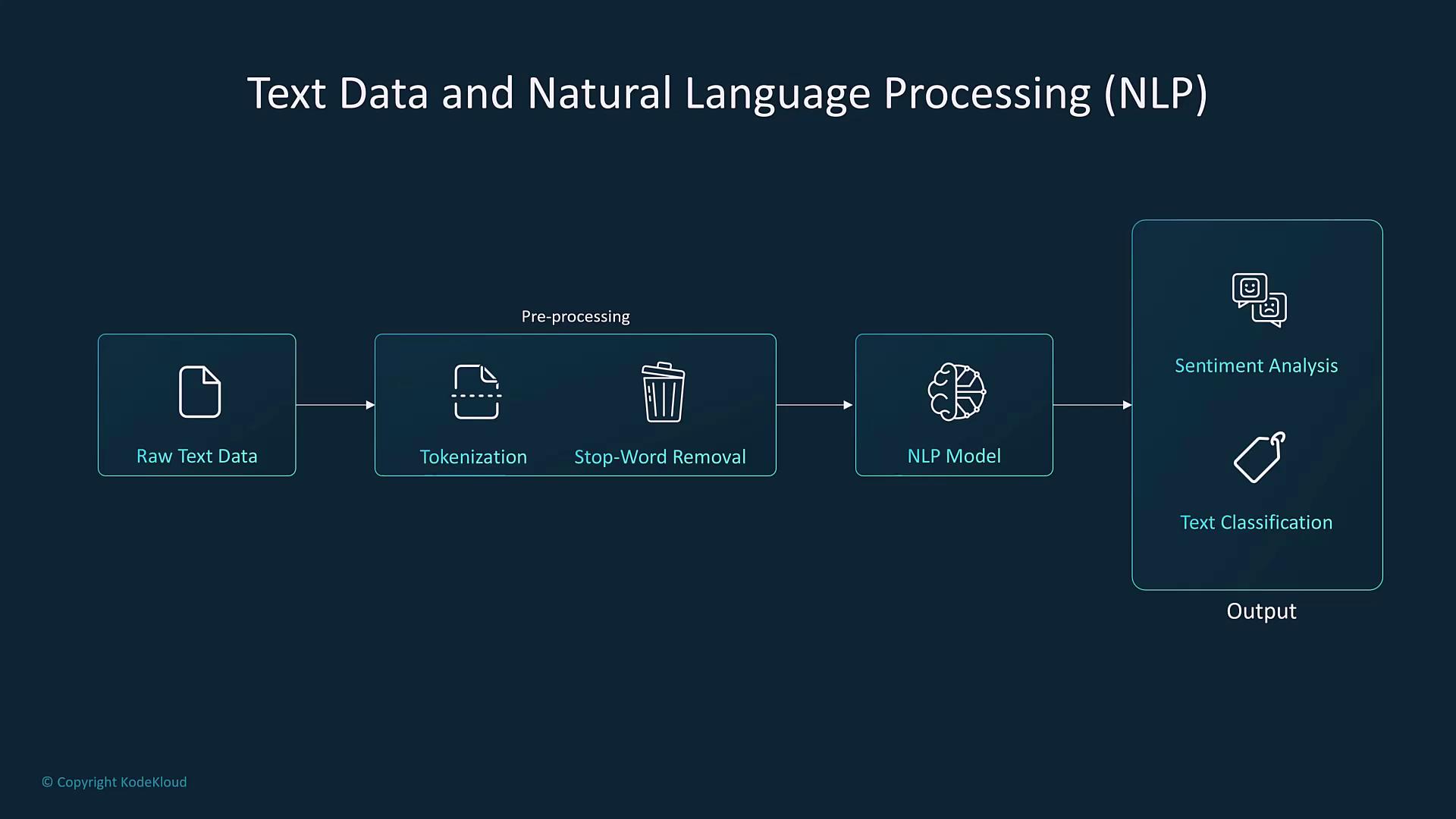
Services like AWS Comprehend further extract meaning and sentiment from unstructured text, which greatly aids in training effective NLP models.
4. Image Data
Image data requires particular preprocessing, including resizing, normalization, and augmentation, to standardize the inputs for computer vision models. These models can differentiate objects (such as cats versus dogs), perform object detection, or enable facial recognition.
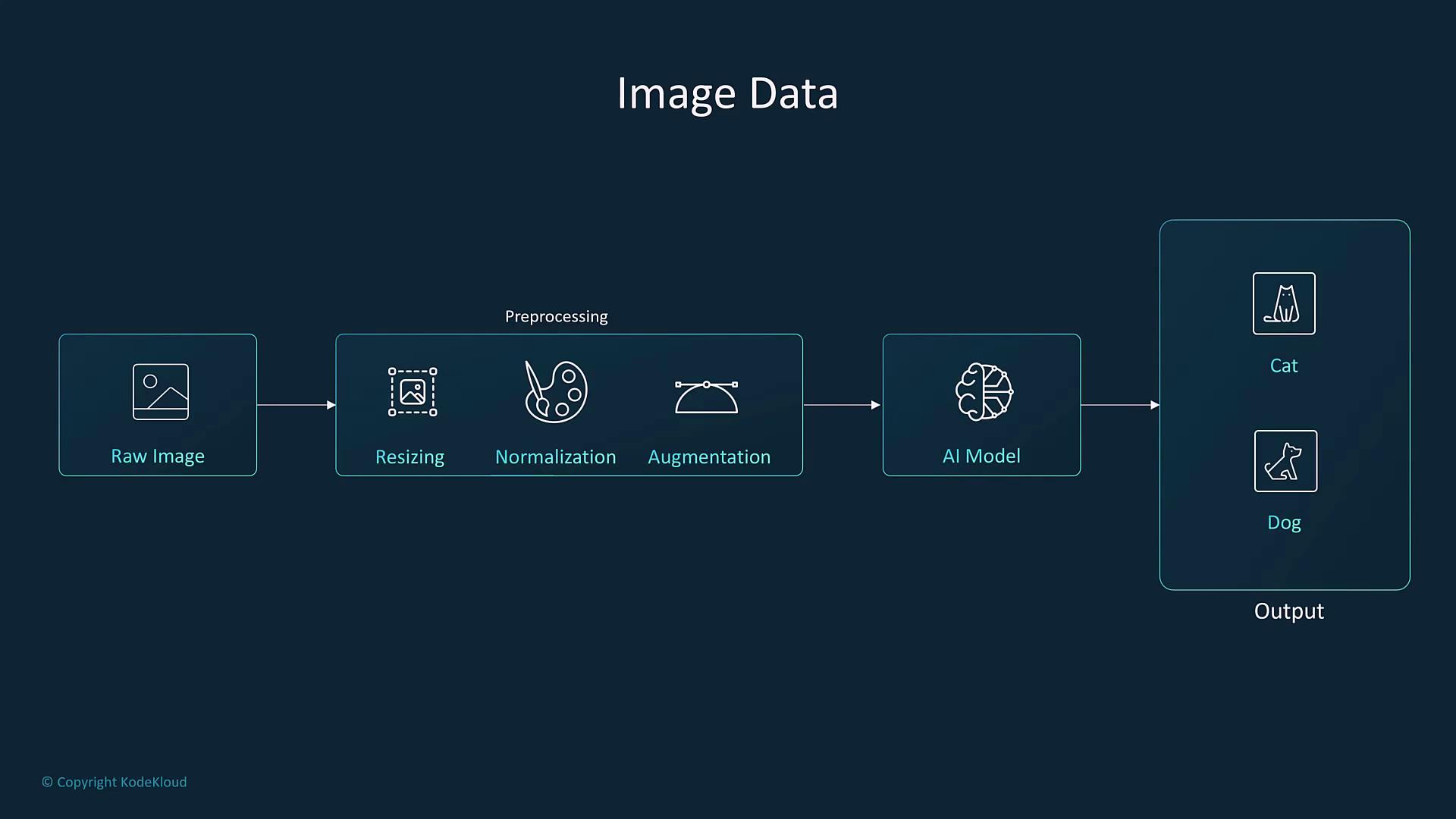
![]()
Amazon Rekognition is a primary service for processing image data, enabling rapid identification of objects and patterns within images.
5. Audio Data
Audio data is pivotal in speech recognition and auditory analysis. Unlike text, audio involves examining frequency, pitch, and volume variations across time. Techniques like Mel Frequency Cepstral Coefficients (MFCCs) convert audio signals into numerical representations, which are then used by models for tasks such as transcription, music analysis, and language translation.
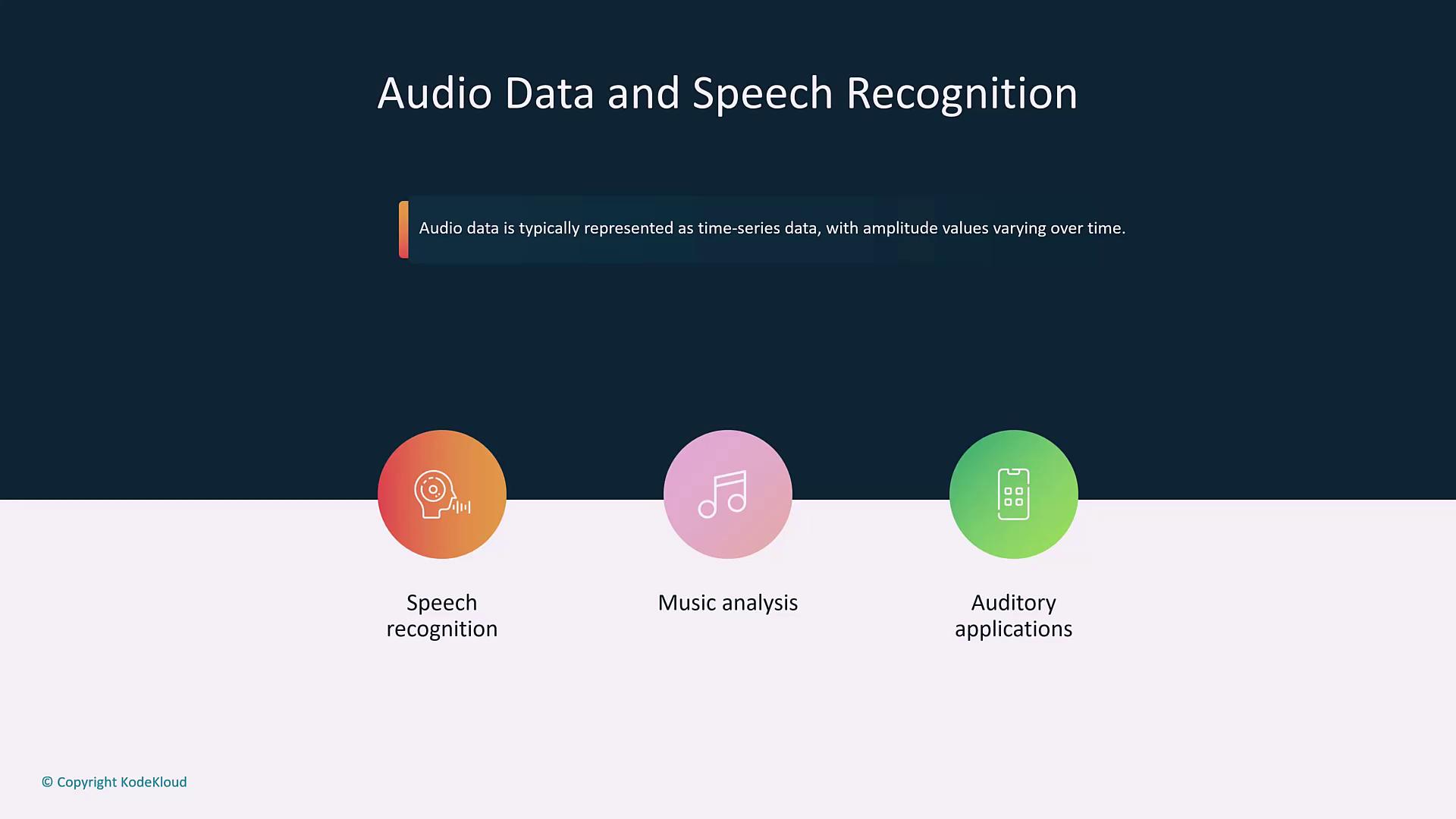
6. Structured vs. Unstructured Data
Understanding structured and unstructured data is crucial for designing ML models:
- Structured Data: Organized in well-defined formats like tables with rows and columns, it is easily processed by traditional machine learning algorithms.
- Unstructured Data: Includes text, images, videos, and audio. This type requires advanced processing techniques and pattern recognition skills.
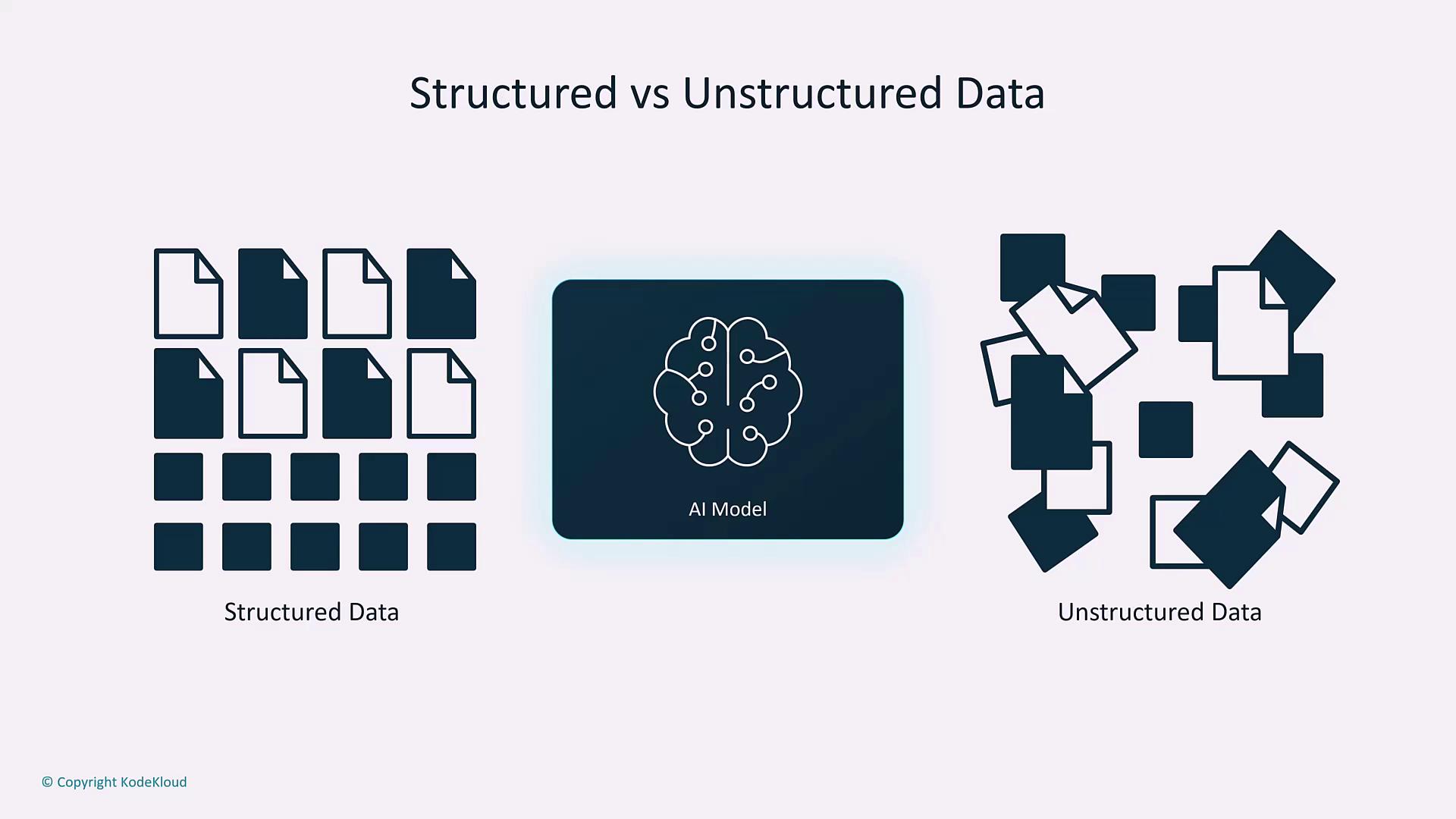
Note
Be sure to choose preprocessing strategies that match the structure of your data to improve model performance.
7. Data Preprocessing
Effective data preprocessing is paramount for ensuring clean and unbiased datasets. Common techniques include:
- Data Cleaning
- Normalization
- Transformation
- Encoding (e.g., one-hot encoding for categorical data)
- Scaling for numerical data
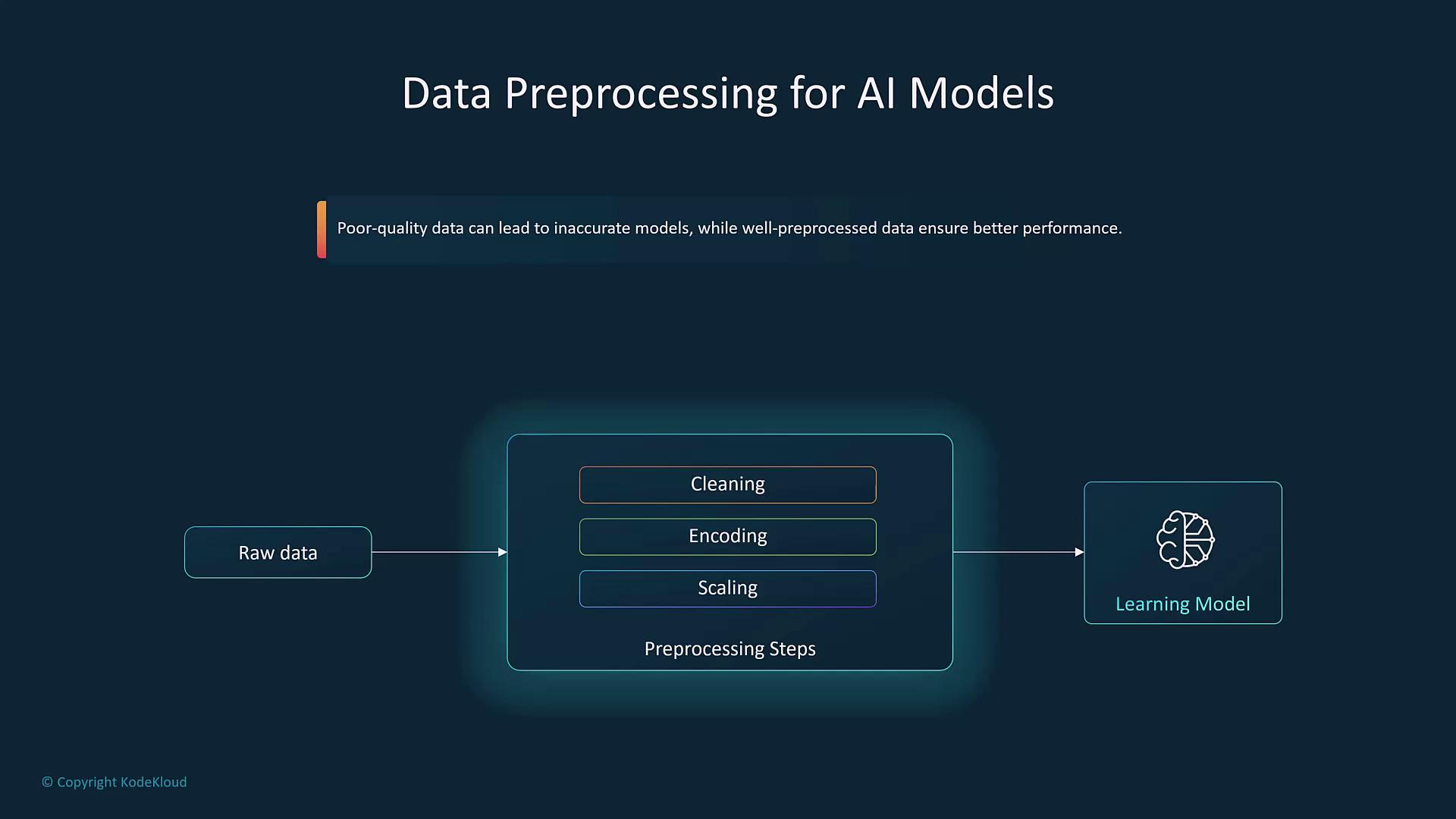
Proper preprocessing not only enhances model accuracy but also speeds up training processes.
8. Labeled vs. Unlabeled Data
Knowing whether your dataset is labeled or unlabeled is essential:
- Labeled Data: Contains inputs paired with corresponding outputs (or labels). For example, images of cats and dogs that are clearly marked facilitate supervised learning.
- Unlabeled Data: Contains inputs without annotations, making it suitable for unsupervised learning tasks, such as clustering or anomaly detection.
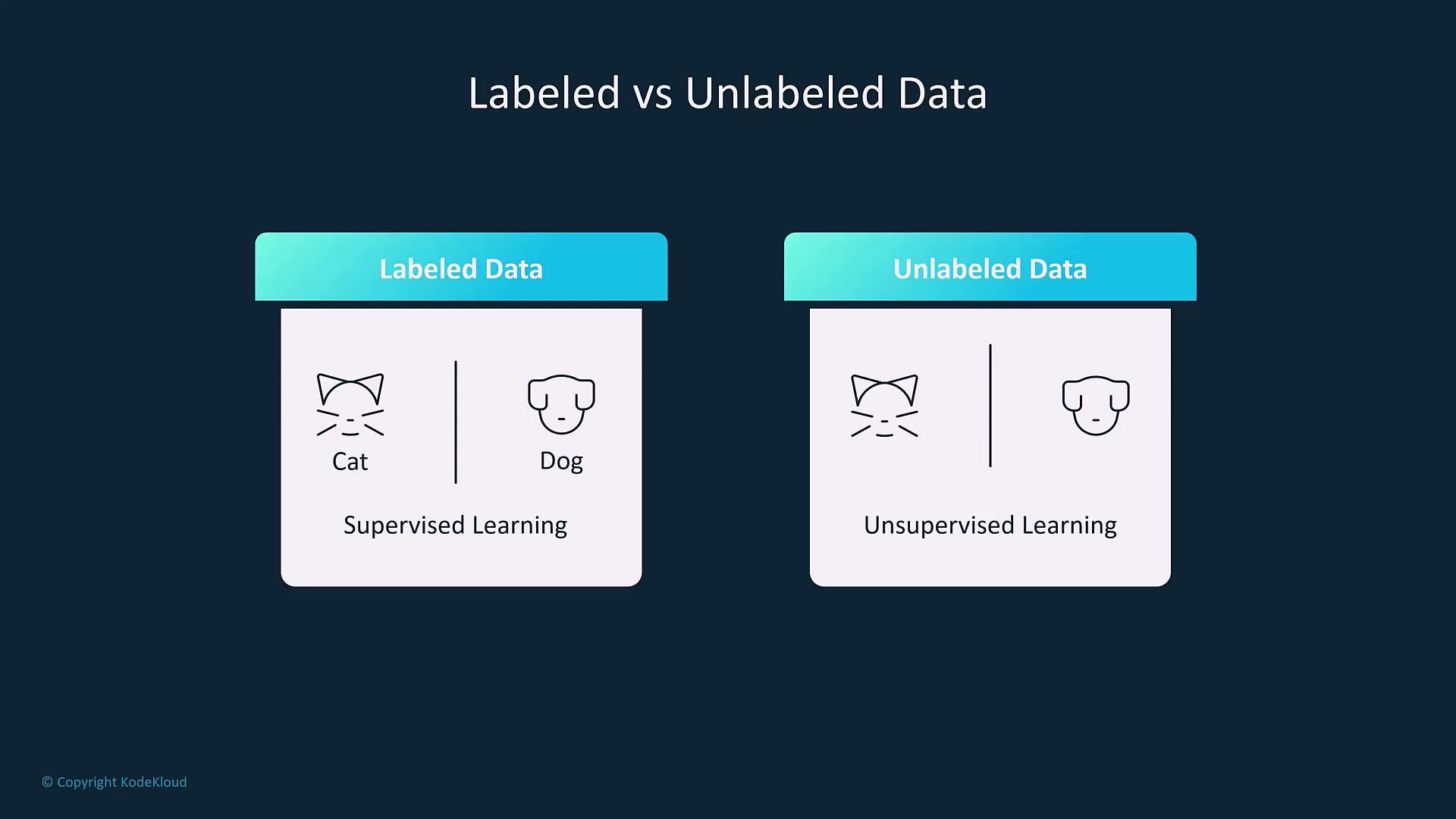
Tip
Supervised learning is best for classification and regression when labels are available, while unsupervised learning excels in discovering hidden patterns within unannotated data.
9. Time Series Data
Time series data, a specialized category of numerical data, is collected at regular time intervals. This type is vital for forecasting trends, such as stock market movements and weather patterns. Popular models for this data include ARIMA, Long Short-Term Memory (LSTM) networks, and AWS Prophet.
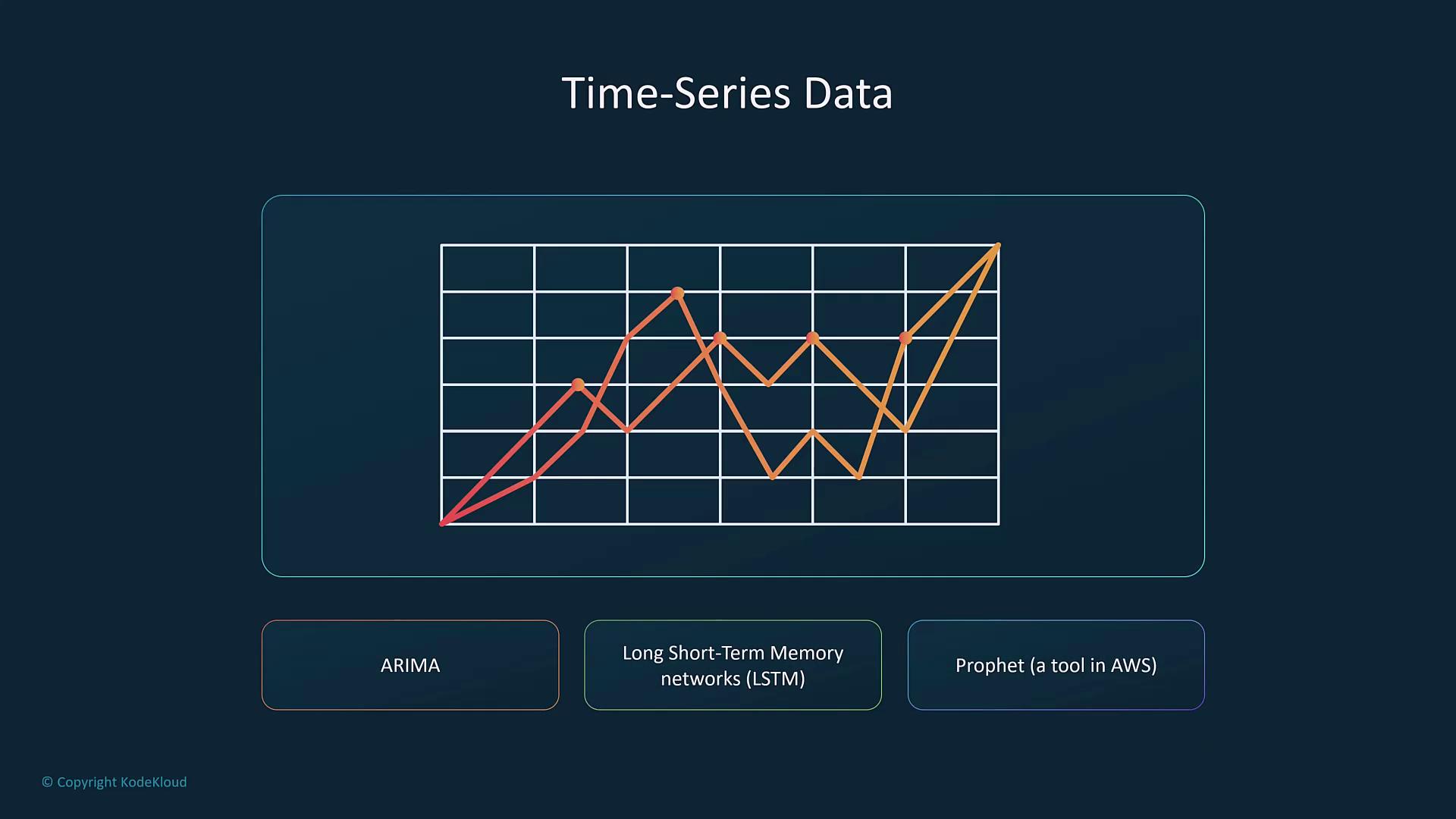
10. Handling Imbalanced Data
Imbalanced datasets occur when one class significantly outnumbers other classes, which can bias the model. For example, if 99% of images in a dataset are of dogs with very few of cats, the model may tend to predict "dog" for most inputs. Techniques to address imbalances include:
- Oversampling the minority class
- Undersampling the majority class
- Using metrics like ROC AUC to evaluate model performance
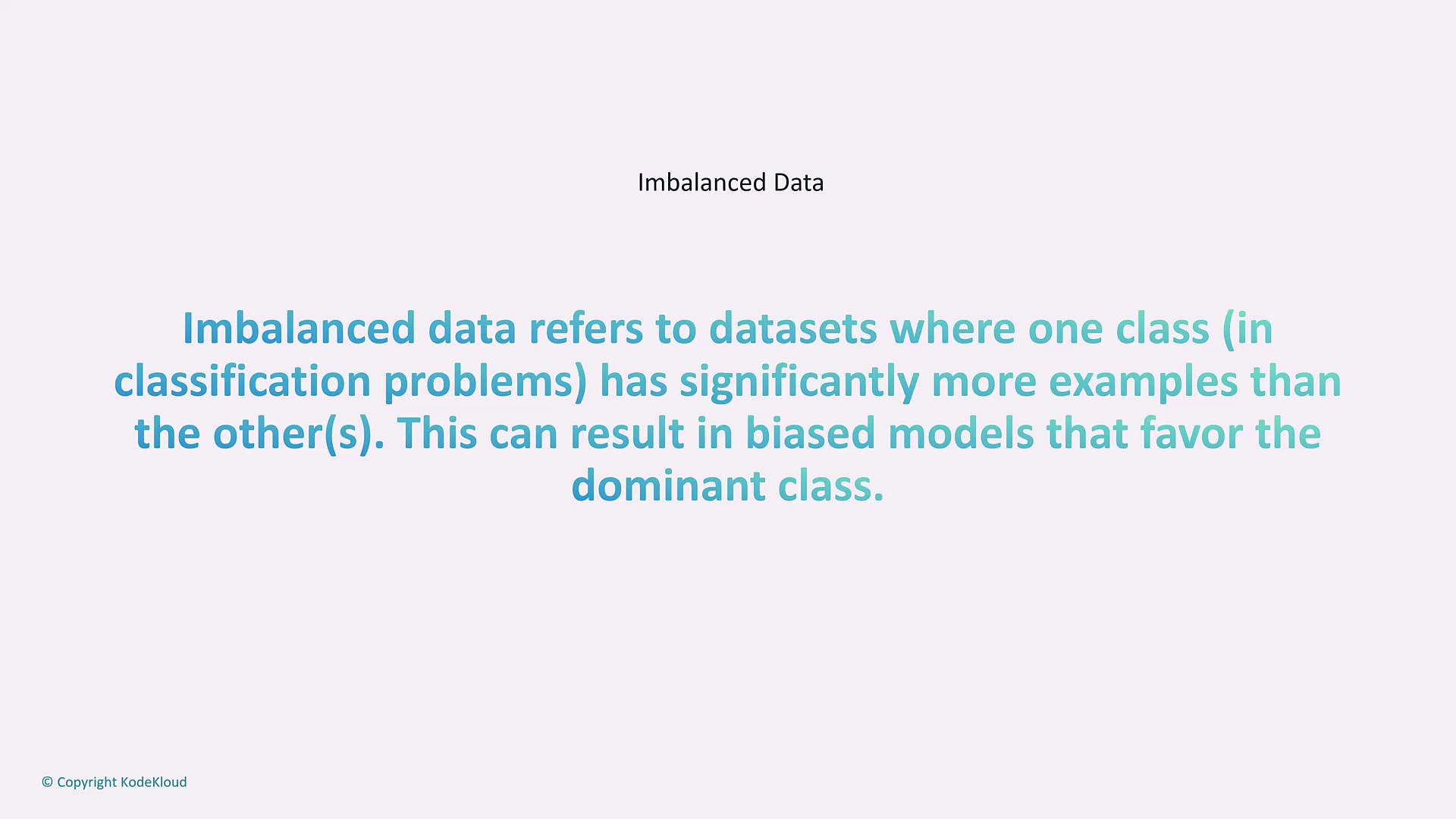
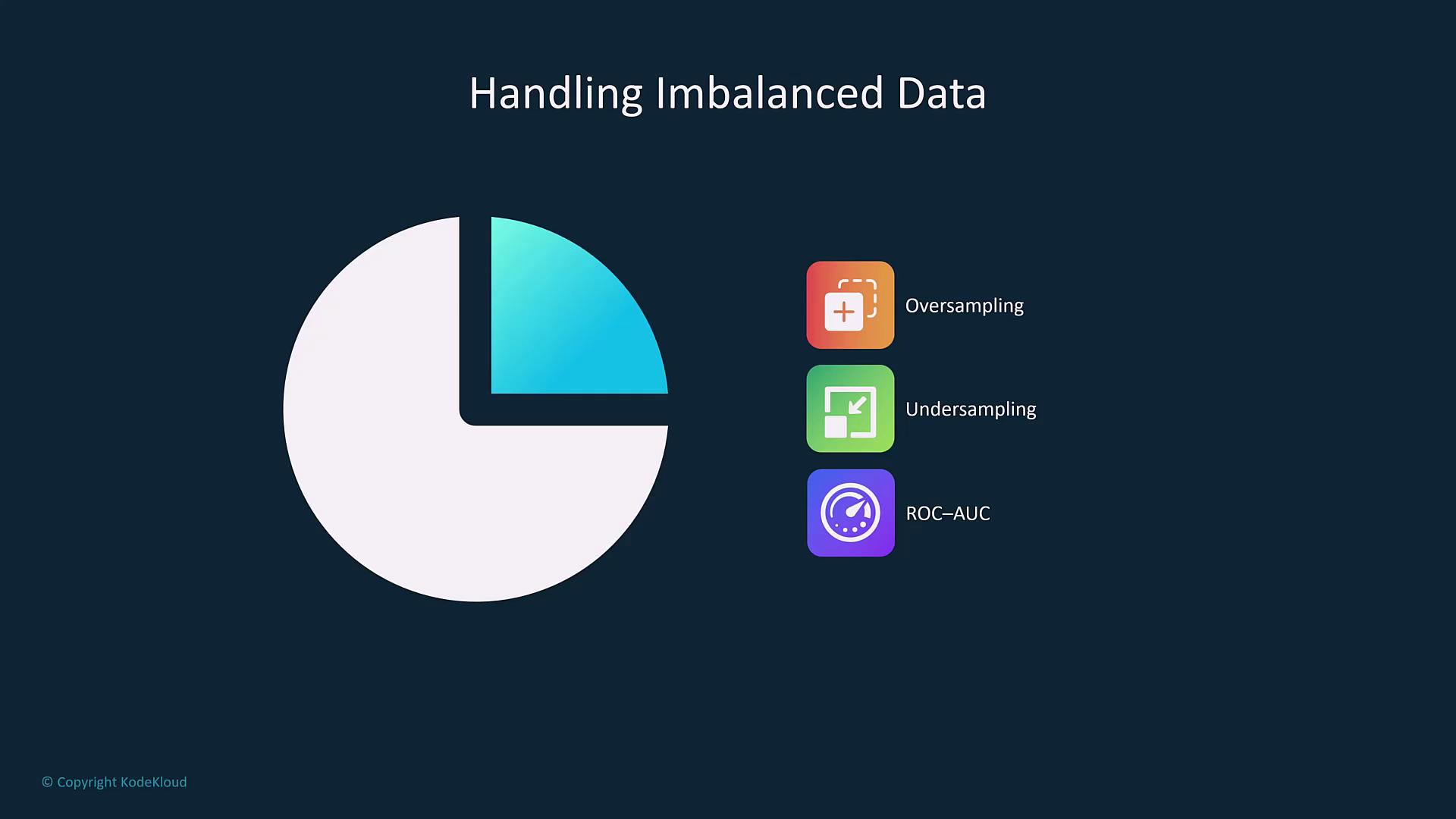
AWS SageMaker provides built-in techniques to mitigate these issues during model training.
11. Big Data and AI
Big data encompasses large and complex datasets that require advanced processing and analytical tools. Despite evolving definitions, big data remains critical for extracting deep insights and training robust AI models. AWS services like EMR, Glue, and SageMaker are optimized for processing big data efficiently.
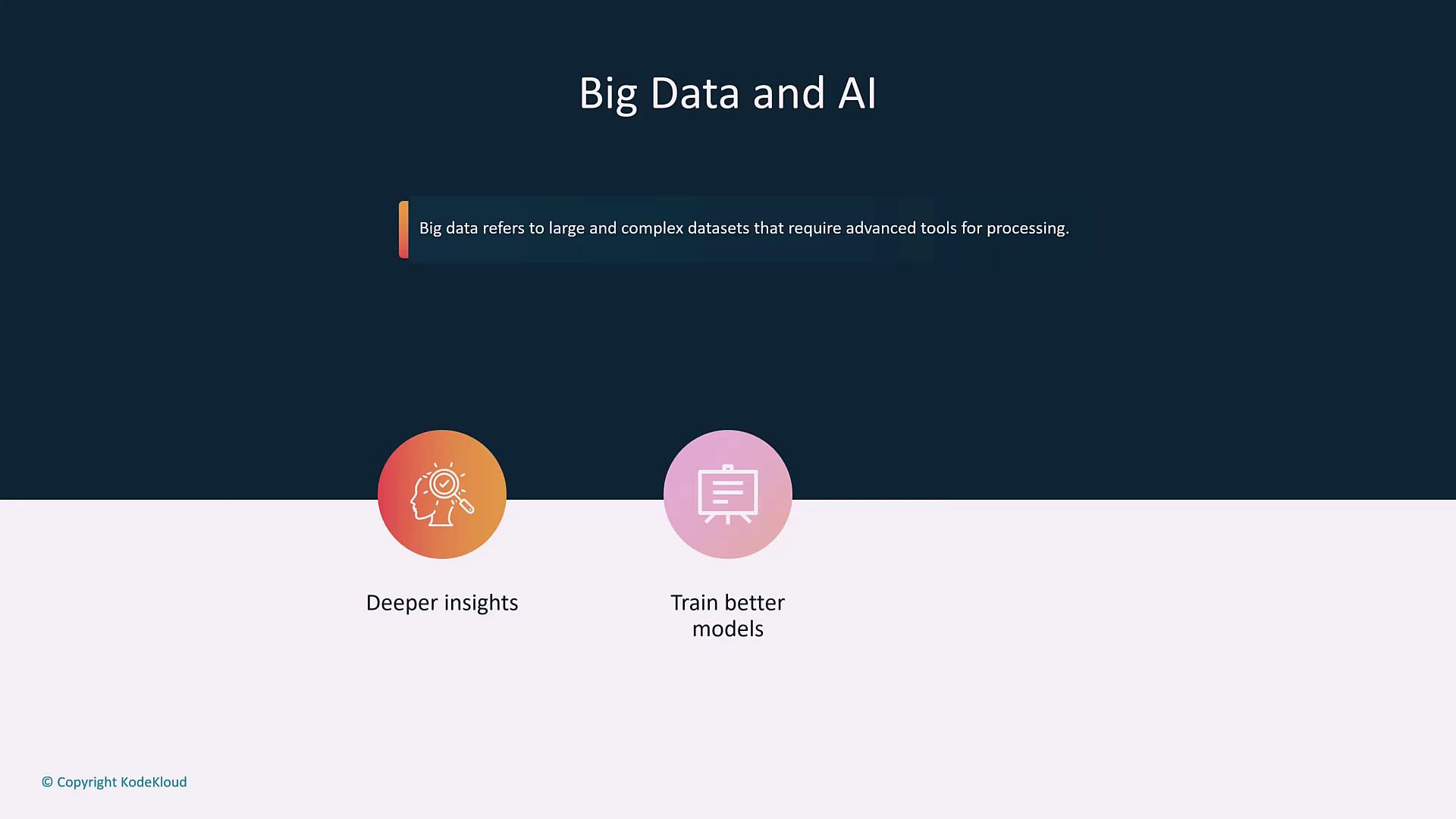
![]()
12. Handling Missing Data
Missing data can compromise the quality of AI models by introducing bias. Common strategies include:
- Replacing missing values with the mean, median, or mode
- Using algorithms that can synthesize or impute missing values during preprocessing

Always validate your imputation methods to ensure that the model's predictions remain unbiased.
Final Thoughts
Selecting the right data type and preprocessing strategy is essential for building effective AI models. For example:
- Decision Trees: Work best with structured, tabular data that clearly distinguishes between numerical and categorical values.
- Convolutional Neural Networks (CNNs): Excel when processing unstructured data like images and text.
- Recurrent Neural Networks (RNNs): Are ideal for time series data when historical trends are vital.
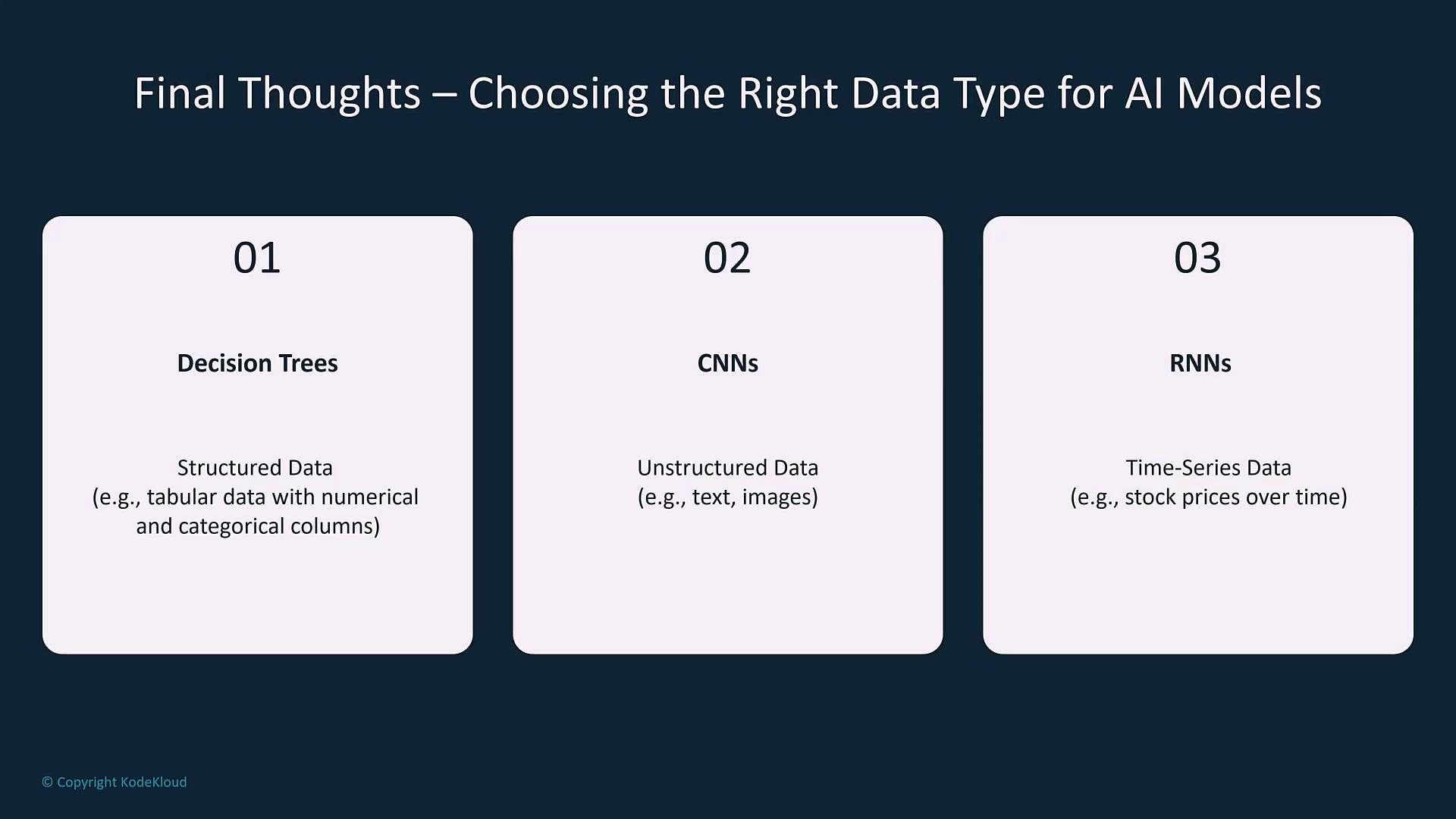
Understanding the nuances of each data type not only improves your model's performance but also guides you in selecting the proper techniques for supervised versus unsupervised learning. In the next lesson, we will delve deeper into distinguishing between these learning paradigms.
Thank you for joining this lesson. Happy learning!
Watch Video
Watch video content